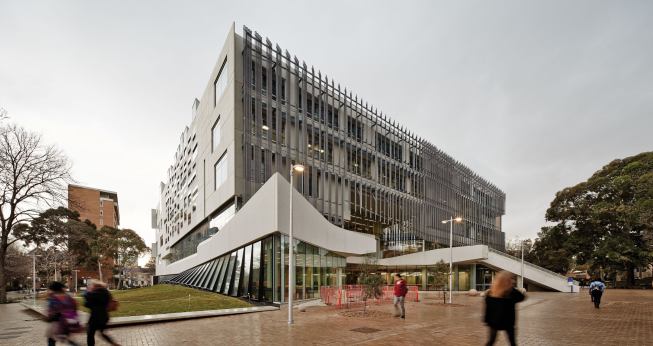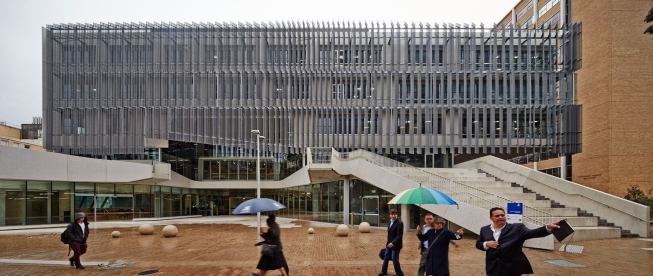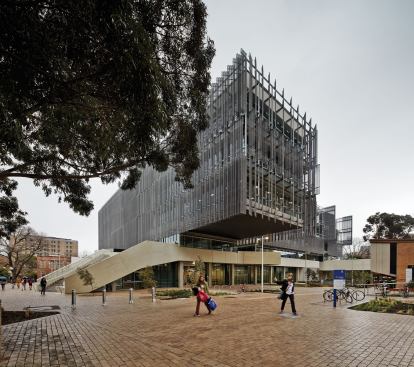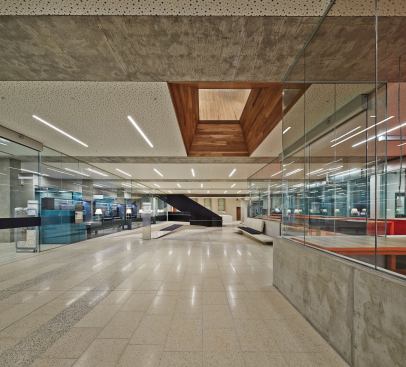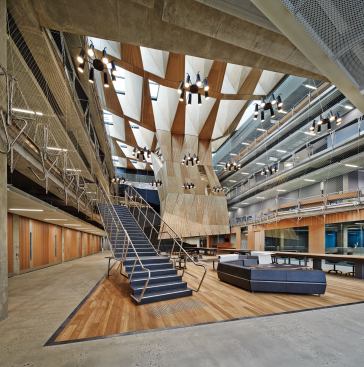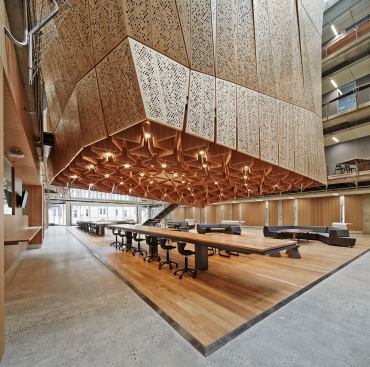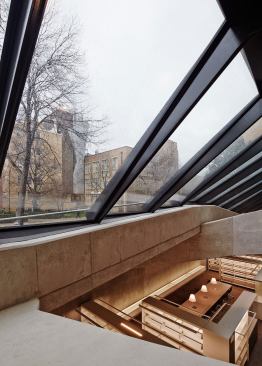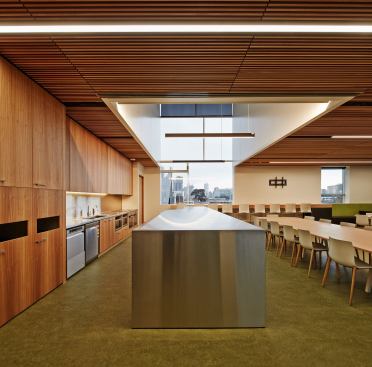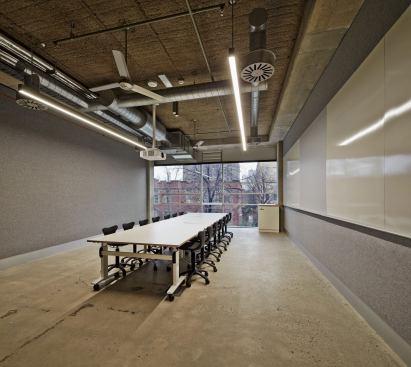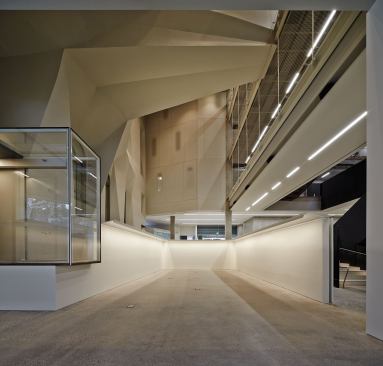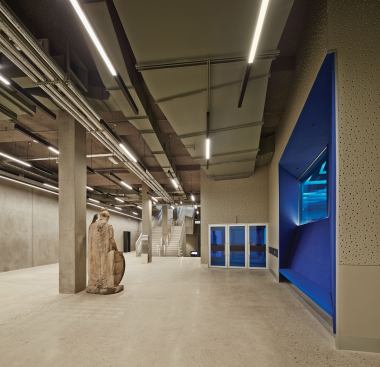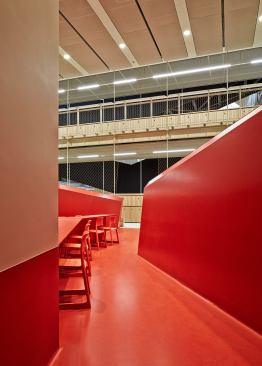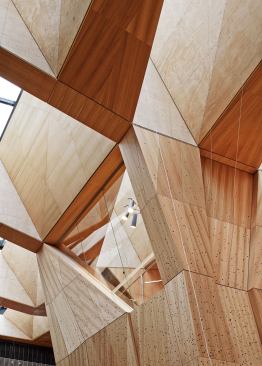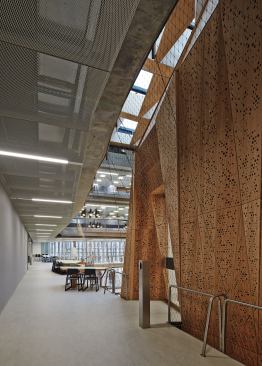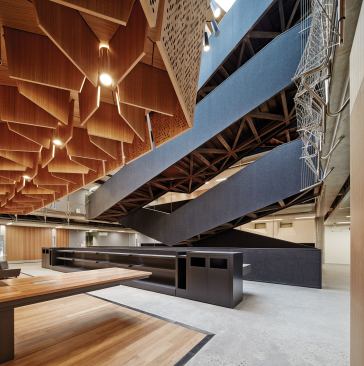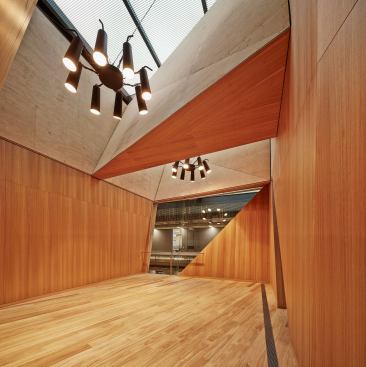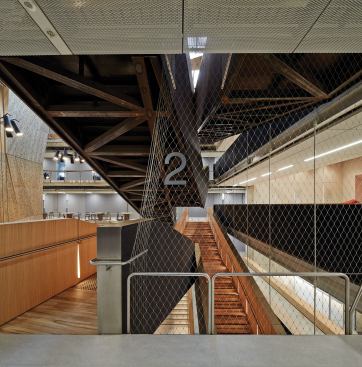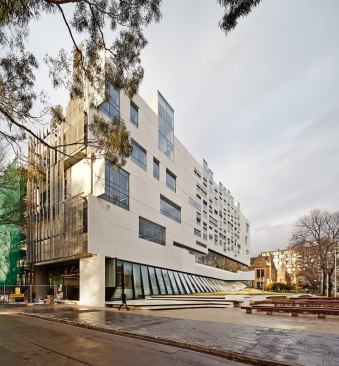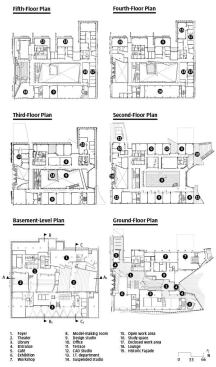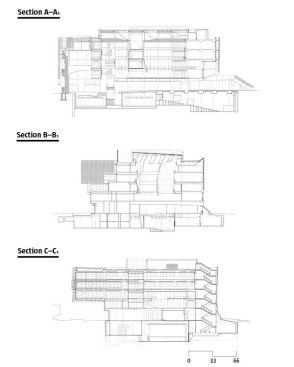Project Description
In the early 19th century, when the architect Félix Duban undertook to
transform Paris’s hallowed École des Beaux-Arts, his signal maneuver was
to place a late-medieval archway in the forecourt of the design
academy’s classical piazza. But the Arc de Gaillon wasn’t just
decoration: It was a radical teaching tool, one that demonstrated
through its hybrid Gothic–Renaissance style how structure and form could
evolve over time, and that there was more to architecture than
Greco-Roman antiquity.
Nearly 200 years later and some 10,000 miles away, two very different firms—Boston’s NADAAA and local firm John Wardle Architects (JWA)—have just finished a new architecture school, the University of Melbourne School of Design’s
Faculty of Architecture, Building and Planning building. Located in
Australia’s sunny second city, it’s a building that doesn’t appear, at
first, to incite much intellectual curiosity: Clad on three sides in
perforated aluminum sunshades, with a blank south front, it seems just
another architectural curio on a campus already littered with evidence
of every design trend of the last century-and-change.
But on closer inspection, this is a building whose didactic ambitions
make Duban’s look like a remedial course. Tom Kvan is the dean of the
Faculty of Architecture, Building and Planning, and he describes the
four big-ticket items that comprised the original brief: “The building
had to be an investigation into the future of studio; into the future of
academic work; it needed to be a living building; and it had to be a
pedagogical building—one that teaches us and that we learn from
constantly,” he says. On all points, but most especially on the last,
the Wardle–NADAAA team have carried the day with a solution that almost
overflows with ideas—a place the School of Design’s more than 3,000
students will not only learn in but learn from.
The collaboration came about rather serendipitously. “We were contacted
first by John about three days before the competition deadline,”
recalls Nader Tehrani, the now-outgoing head of the architecture program
at MIT and the founding principal of NADAAA. Tehrani had recently
visited Melbourne, but “we hadn’t known it,” says John Wardle, principal
of Collingwood, Australia–based John Wardle Architects, who’d been out
of town at the time. As luck would have it, Tehrani had seen a Wardle
project during his stay, and was sufficiently impressed to join forces
almost instantly. “Nader said yes within about 20 seconds of me asking,”
Wardle says, and in short order the team found out that their proposal
had made it past the first round of the design competition, which
included more than 130 applicants.
Significant changes had to be made to their winning design to fit a
tight university budget, but the core conceit of the design remains
largely unchanged. “The building as a type is very simple,” Tehrani
says. “It’s an atrium building, a donut.” It’s a donut with a
difference, however, as this one is lofted up a story: The first-floor
entry level is a continuation of the campus, with fabrication workshops,
the library, and exhibition spaces arrayed around a central concourse;
only on ascending the stairs does the visitor find the atrium, with four
stories of galleries ringed around an open lounge space topped by a
dramatic coffered wood ceiling.
The list of design details, and of the programmatic significance of
each, is fairly astonishing, a result of a Skype-based collaboration
that Wardle describes as “a conversation that constantly generated
ideas.” The undersides of several staircases, for example, are
unfinished, exposing the steel to “reveal how the stair is constructed,”
as dean Kvan puts it. In the entryway concourse, there’s a small glass
portal in the ceiling so that non-architecture students passing from
east to west can get a glimpse into the light-filled atrium above, a
little teaser to encourage them to head upstairs and see what the
designers are up to. From the metal protective mesh surrounding the
galleries to the worktables embedded partially in it to help hold the
screen in tension; from the swiveling panel walls of the atrium-level
studios to the glass windows near the basement auditoriums that give
students a glimpse into the boiler rooms—almost nothing in the building
is without some educational import concerning materials, building
science, and the art of architecture.
All of these little Arc de Gaillon moments inside are set off by one
big one on the exterior. What had been the decorative façade of the
Joseph Reed–designed Bank of New South Wales, completed in 1859 and
gifted to the school after the original building’s demolition in 1932,
has been tacked onto a portion of the new architecture building just as
it had been to the school’s now-demolished previous structure. This
extraordinary set piece and beloved campus fixture (which is secreted
under green scaffolding, and will be until its installation on the new
structure is completed in December) is given an appealing bit of
deference by the brash metal building that surrounds it, with the
irregular zinc louvers billowing around it slightly—“like a curtain,”
says JWA principal Stefan Mee—a lesson in how even the past can find a
place in the architecture of the future.
So profuse, in fact, is the structure’s built-in curriculum that it
leaves one a little in doubt as to how much its already-harried students
will be able to absorb. “The more we got into it, the more scripting we
felt was required,” Wardle says, and the result is a building with a
very thick plot indeed. What is likely to become its most recognizable
feature, the striking Suspended Studio that dangles like a wooden
lightning bolt in the atrium, is also a sort of metonym, a symbol of the
whole—a place where the building, and the students in it, seem to be
flying beyond the limits of the possible. That, claims Tehrani, is the
whole point, a mark of how much the necessity of dynamism and
adaptability has become the hallmark of architectural education since
the days of the Beaux-Arts. “We’re still always working with an
understanding that the building has to be timeless,” he says. “But
architecture is changing radically.” —Ian Volner
